Mount Kilimanjaro is the world's largest freestanding mountain, attracting thousands of climbers annually. How hard is it to climb? And is it worth it? Here's what you need to know about the trek, insurance, and what happens on summit night.
Shares
 Photo © Stephanie Vermillion
Photo © Stephanie Vermillion
- Updated January 2024 -
Snow-capped Mount Kilimanjaro is a beacon of East Africa and a major draw for adventure travelers. I’d dreamed about summiting its sky-high, 19,341ft (5,895m) Uhuru Peak throughout my childhood. My dad trekked the mountain in the 1970s, then spent his life inspiring me to do the same.
I’m so glad he did. From jaw-dropping sunsets above the clouds and soccer matches with our porters and guides to that starlit (and successful) clamber to the roof of Africa, my one-week climb up Mount Kilimanjaro did exactly what my dad predicted: It changed my life.
In this guide, I’ll help you plan and prepare for that long-dreamed-of Kilimanjaro climb so it can change your life, too.
- The Kilimanjaro experience
- What to look for in a tour operator
- What to know about altitude sickness
- Preparing for your Kilimanjaro hike
- What to expect on summit night
- How to ensure fair and responsible guide and porter treatment
- Travel insurance for Kilimanjaro
The Kilimanjaro experience
Most climbers fantasize about those 20-odd minutes on Uhuru peak but trust me: the week-long journey that bookends summit night – and crosses through multiple climate zones – is just as mind-blowing. A lush, jungle-like start with colobus monkeys and colorful flowers leads to scrubby moorlands and dusty alpine desert before topping off at the snow-flecked Arctic zone peak. Days leading up to summit night are also more pleasant; most non-summit-night hikes range from three to six hours with about 2,000ft to 3,000ft (600m to 900m) of gradual elevation gain.
Of the mountain’s seven established routes, I picked the seven-day, 49mi (79km) Rongai trail for its remoteness and fewer crowds. It snakes up the northern side of the mountain, straddling Tanzania and Kenya. My hiking buddies (my husband and brother-in-law) and I trekked between 5-7mi (8-11km) each day, and spent downtime feasting on warm porridge (breakfast) and soups and stews (lunch and dinner), then playing cards, journaling, and kicking a mini soccer ball with our guides and porters.
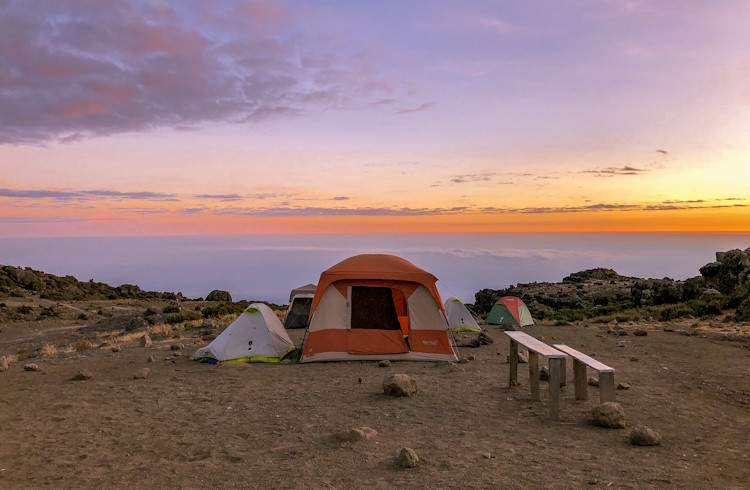
Since we’re all former athletes and runners, we had a good base of fitness going into the climb – especially once we increased our uphill training (more on that below). That said, you don’t need to play sports or run marathons to ascend Kilimanjaro. You need adequate fitness and, equally important, adequate time for acclimatization. Depending on the route, it takes between five and nine days to climb Kili up and back. The longer the climb – such as eight or nine days instead of six or seven – the better your odds of avoiding altitude sickness and reaching the summit.
Weather also plays a key role in your experience. Generally, December to March and June to late October offer the best climbing climate. We trekked in early October and enjoyed mild weather, with only one afternoon of precipitation, the entire trip.
What to look for in a tour operator
Choosing a reliable and experienced tour operator for your Kilimanjaro climb is critical. Was it tempting to go with the least expensive option? Of course. But having learned my lesson trekking Tanzania’s Mt. Meru (14,967ft/ 4,562m) on the cheap during college – at a way-too-quick pace, and in ill-fitting rental gear – I knew investing in a reputable Kilimanjaro company (roughly US $3,000/ TSh7,545,000) was worth it.
First, I browsed review sites, such as TripAdvisor, to gather intel. Once I selected my top outfitter – Amani Afrika, a boutique, family-owned Tanzanian company founded by a former guide and porter – I scheduled a call to ask important questions: What precautions do you have in place for emergencies? What’s your experience with climbing the mountain? How do you ensure porters are treated fairly?
Between reviews, recommendations, and an informational call, you’ll have a hunch on whether or not the company is a good fit. Additionally, you can find more than 100 operators that prioritize their climbing staff via the Kilimanjaro Porters Assistance Project, which vets companies based on responsible treatment of porters and guides.
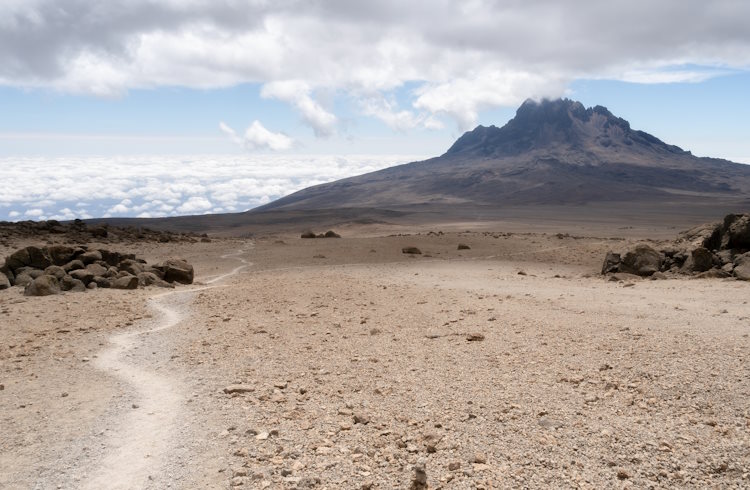
What to know about altitude sickness
Many consider Mount Kilimanjaro the easiest of the seven summits (the tallest peak on each continent) because it doesn’t require technical climbing – but don’t underestimate it. A Kilimanjaro climb will take you up to 19,341ft (5,895m). At this height, you breathe in only half the amount of oxygen you would at sea level.
The effects of altitude often plague climbers well before this. You could begin to feel its effects as soon as 6,000ft (1,829m), which is roughly the first or second day. Early altitude sickness symptoms include nausea, headaches, cough, fatigue, and loss of appetite. Tell your guide immediately if you begin to feel these symptoms, as this condition can be deadly. Learn more about altitude sickness and how to prepare for it here.
Preparing for your Kilimanjaro hike
Fitness and gear are foundational to your Mount Kilimanjaro preparation. For fitness, many tour operators provide a suggested training plan, or will refer you to one, such as Mountain Tactical Institute’s Training Program. I ran four to six miles several days per week, supplemented with cross-training and weight workouts, and added hill repeats (running up and down a hill) to the mix. To prepare for brutal elevation gains, I swapped my gym’s elliptical for the Stair Master and took longer hikes (five to six hours) every weekend I had free. Getting comfortable with your gear is key, so I used those hikes to break in my new boots, backpack, and hiking pants.
With multiple climate zones, Kilimanjaro gets toasty at the bottom and near or below freezing at the peak. It’s tempting to pack for every possible condition, but you need to keep your gear light. I used a soft-sided 90-liter duffel with back straps (carried by the porters) and my day pack. Your operator will provide a packing list, but in general, you’ll want layers, extra socks, and quick-dry clothing, as well as a cozy pair of sandals for lounging around camp. Most climbing teams handle tents and sleeping bags.

What to expect on summit night
The final Kilimanjaro ascent begins at midnight, often on the fifth or sixth night, with the goal to reach Uhuru peak around sunrise. This stretch is all about mental toughness. You’ll sip a quick twilight coffee, bundle up, then follow a zig-zag of headlamp-adorned hikers for nearly 4,000ft (1,220m) of elevation gain up the steep switchbacks. Most summit nights take between six to eight hours of high-altitude huffing and puffing, with multiple stops for water, snacks, and trailside bathroom breaks.
The slog from basecamp to Gilman’s Point at 18,652ft (5,685m) is summit night’s hardest stretch. After that, it’s only about two hours or less to Uhuru. At this point, the elevation gain becomes slightly less extreme, and the slowly rising sun will begin to spotlight your surroundings, from the snow-speckled ash trail to the sea of clouds – and, on your left, tiny Mount Meru peeking above them.
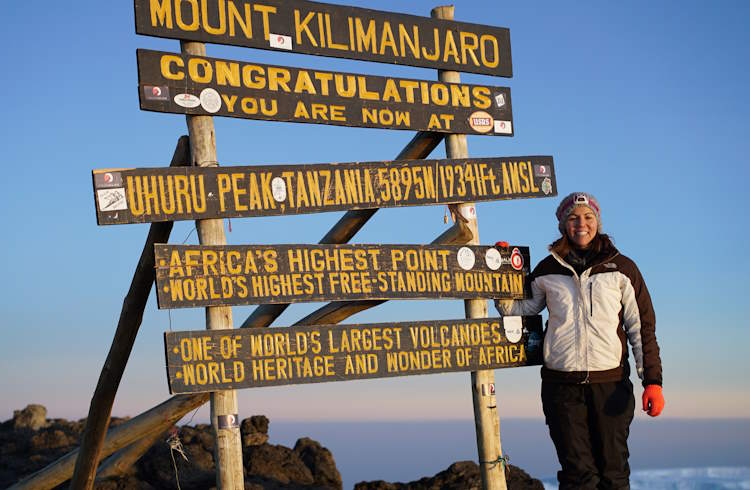
You’ll have about 20 minutes to enjoy your summit success atop Uhuru; any longer increases your chance of altitude sickness. Wait in line for your photos by the mountaintop sign, have a celebratory dance party with your guides and porters, and, while you’ll want to photograph every second, remember to put down your camera to admire the stratovolcano’s humbling views with your own two eyes.
How to ensure fair and responsible guide and porter treatment
Guides, chefs, and porters are the backbone of your climb. They carry gear, set up camp, keep you fed, and ensure your safety. They’ve also been historically mistreated, from unfair payment to lugging back-breaking loads. According to the Kilimanjaro Porters Assistance Project, porters should carry no more than 44lbs (20kg), so be sure to pack light.
Also, prepare to tip. Your operator should provide a breakdown of tipping recommendations per team member but expect to pay a total of at least US $400 (TSh 2,515) per climber – tip via cash in US dollars or local currency.
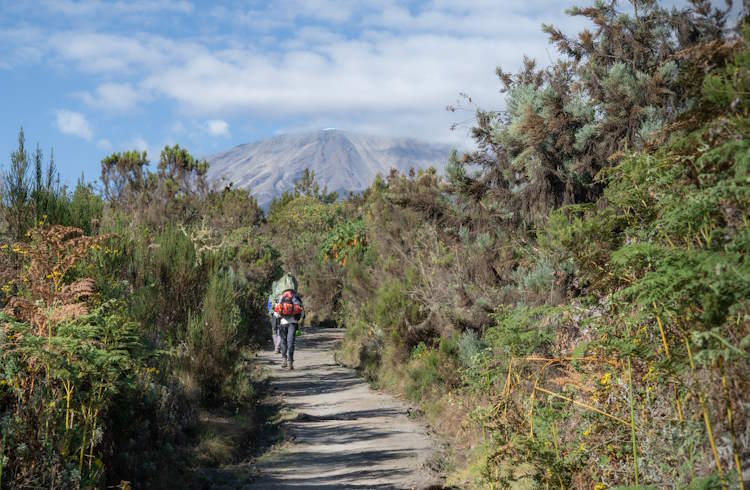
Travel insurance for Kilimanjaro
Climbing Kilimanjaro certainly has its risks, so it’s wise to consider travel insurance for your trip. Not only is the threat of altitude sickness very real, but there’s also the possibility of a twisted ankle or some other injury.
When choosing travel insurance, it’s up to you to choose a plan with right level of coverage. All World Nomads plans offer cover for hiking to 13,123ft (4,000m), some of the plans offer cover for hiking to 19,685ft (6,000m), and none of the plans offer cover for hiking over 19,685ft (6,000m). Be sure to check the policy and what is and isn’t covered for hiking and trekking.
Related articles
Simple and flexible travel insurance
You can buy at home or while traveling, and claim online from anywhere in the world. With 150+ adventure activities covered and 24/7 emergency assistance.
Get a quote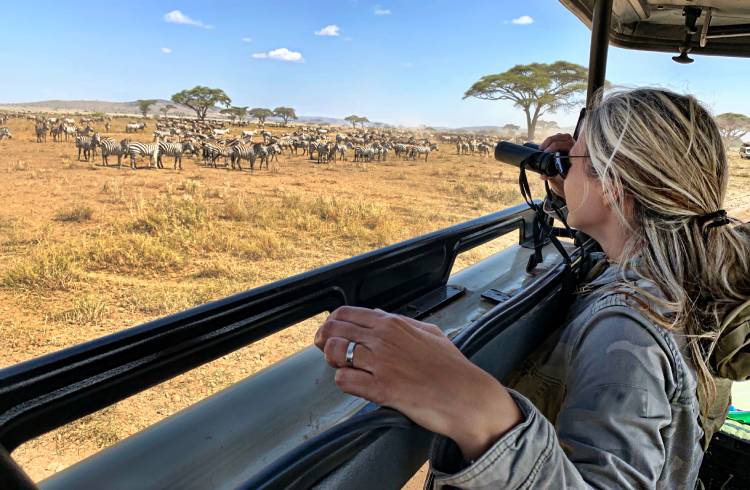
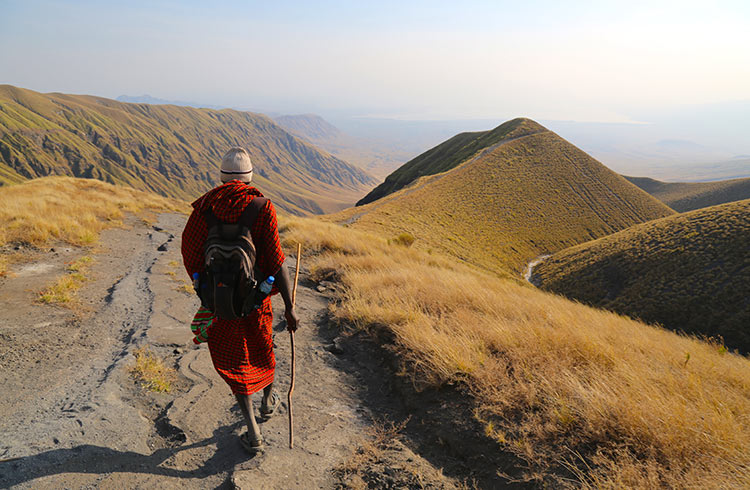
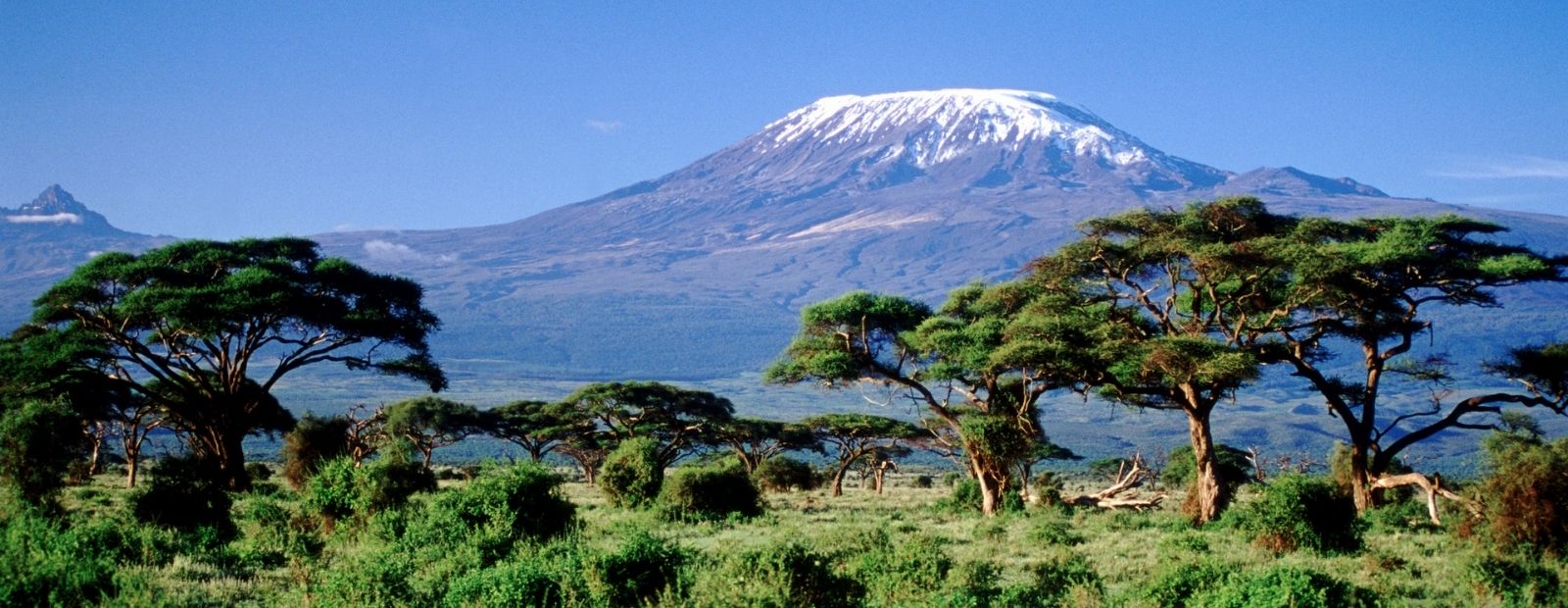
3 Comments
Thanks for this constructive article, I am from Arusha Tanzania , It is 83 Kilometer from where I am to Kilimanjaro, and I am in the tourism industry for many years ..so guys you are warmly welcome.
All of the things mentioned are useful. In addition, expect to get a physical and provide it prior to your climb. Your guides will check your BP and O2 every day. Also eat some fiber. They won't let you summit if you don't have a bm on the mountain! It was a truly a life changing experience.
I’ve been to Arusha, and Nairobi 3 different times. I really enjoyed my times there, tho I did not climb the mountain, Its beautiful. I would recommend going to the Parks, magnificent. It’s a trip in a lifetime. The locals are very nice there.